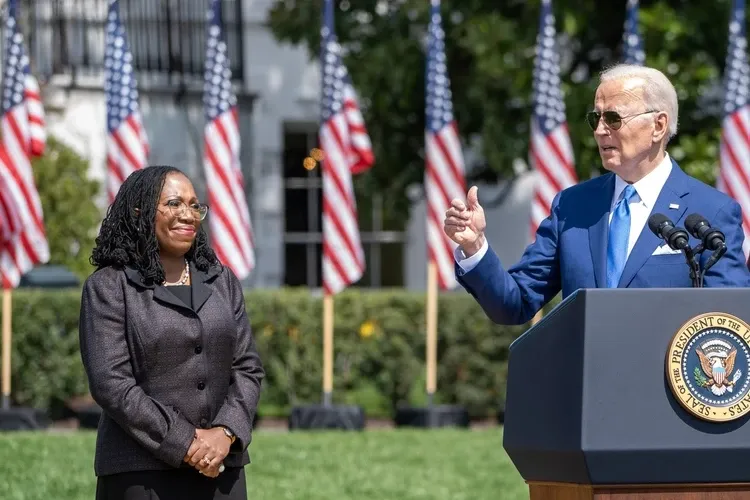In a landmark case brought to the Supreme Court this term, a majority decided to gut affirmative action, correctly stating that colleges and universities which use racial bias for admissions are violating the equal protection clause of the Fourteenth Amendment.
Chief Justice John Roberts wrote the opinion for the conservative majority with a lengthy concurrence from Justice Clarence Thomas. More on that later. The dissent was composed, predictably, of the three liberals: Justice Sonia Sotomayor, Justice Elena Kagan, and Justice Ketanji Brown Jackson.
Justice Sandra Day O’Connor said in 2003 that “the use of racial preferences will no longer be necessary” within twenty-five years. Now, two decades later, we are still debating the benefits and obvious disadvantages of judging college applicants based on their race.
Instead of focusing on the specifics of the ruling or even the creation and implementation of affirmative action itself, let’s discuss the future of admissions and how higher education will most certainly continue practicing preference when it comes to race.
While some may hope that eliminating affirmative action will usher in pure merit-based academic recognition, it’s more likely that schools will pivot and do away with admissions criteria that highlight differences in academic achievement altogether. Of course, college admission employees won’t say they are judging people based on the color of their skin, but there will be clever ways to form the school population with processes that don’t fall under the now-unconstitutional umbrella.
How will schools get away with this? How will progressive universities continue to uphold “diversity” without explicitly using skin color as a determining factor? Moments after the Supreme Court ruling, Harvard released the following statement:
“We write today to reaffirm the fundamental principle that deep and transformative teaching, learning, and research depend upon a community comprising people of many backgrounds, perspectives, and lived experiences. That principle is as true and important today as it was yesterday. So too are the abiding values that have enabled us and every great educational institution to pursue the high calling of educating creative thinkers and bold leaders, of deepening human knowledge, and of promoting progress, justice, and human flourishing.”
What does this mean and how should we interpret it?
In our brave new world, universities will be able to skirt the affirmative action mandate by approaching admissions in a more “holistic” way. In eliminating objective criteria such as SATs and grades, a move which has already become commonplace after the lockdowns, they will be able to look at applications and student information in a way that allows race to become the defining issue. They’ll accept student essays and background information detailing students' experiences with discrimination, microaggressions, and “lived experiences.” When you do away with anything that lends itself to meritocracy, what lasts is student experience and background, race included.
Two opinions yesterday clearly illustrated the massive difference in how our nation views the issue of using race preference. Justice Thomas and Justice Jackson could not have been further apart on the issue, seeming to spar directly with one another in specific portions of their opinions. Justice Jackson took aim at the majority of the Supreme Court:
“No one benefits from ignorance. Although formal racelinked legal barriers are gone, race still matters to the lived experiences of all Americans in innumerable ways, and today’s ruling makes things worse, not better. The best that can be said of the majority’s perspective is that it proceeds (ostrich-like) from the hope that preventing consideration of race will end racism. But if that is its motivation, the majority proceeds in vain. If the colleges of this country are required to ignore a thing that matters, it will not just go away. It will take longer for racism to leave us. And, ultimately, ignoring race just makes it matter more.”
It’s simple to see that Justice Jackson believes racism itself will only end if we achieve complete racial parity. That, of course, is not true, and using racial bias to work toward so-called racial parity is only harming other students in the process. It’s using racism to end the great harm racism has already inflicted. We all know this will not work, but Justice Jackson self-righteously labels those who don’t have eyes to see as “ostrich-like.”
Taking a wrecking ball to Justice Jackson’s dissent, Justice Thomas unleashes pure common sense on her argument. He made multiple concrete points, but this one in particular spoke directly to her assertion that doing away with affirmative action would cripple minorities and eliminate a chance for racism to disappear:
“After siloing us all into racial castes and pitting those castes against each other, the dissent somehow believes that we will be able at some undefined point to ‘march forward together’ into some utopian vision. Social movements that invoke these sorts of rallying cries, historically, have ended disastrously.”
We live in a day and age where the halls of higher education are consumed with identity and skin color, and once admittance into these institutions is secured, the focus then becomes credentialing and indoctrination into its culture's most sacred beliefs: namely, that we must use racial preference to end racism, but also that racism will never, ever end. Justice Jackson, the very embodiment of this system, is proof of its self-replicating nature.
We shouldn’t, for one second, believe that colleges are going to give up the practice of race-based selection. Affirmative action will still exist. It will just look a little different.



